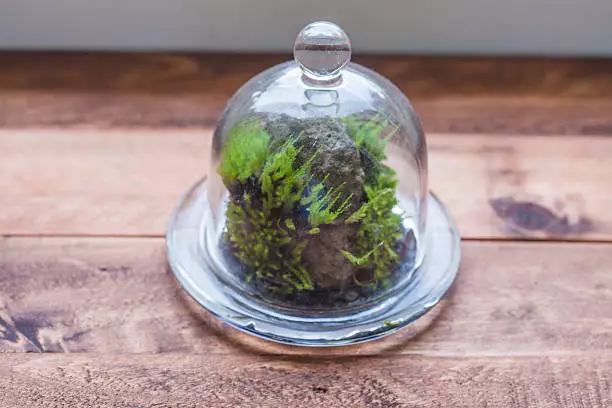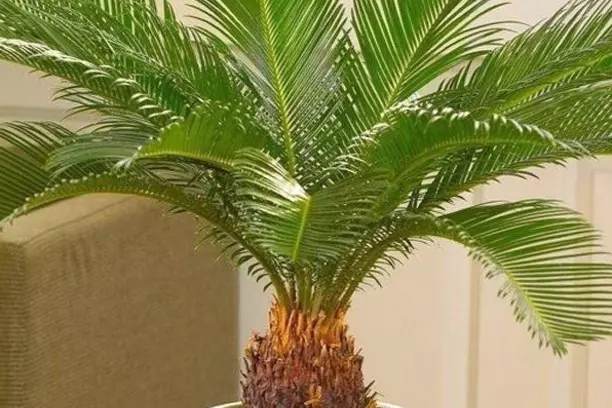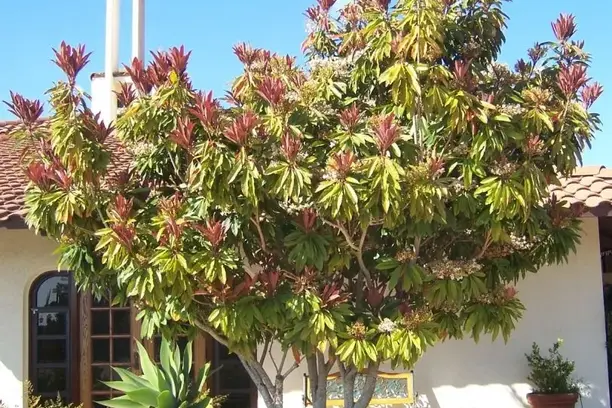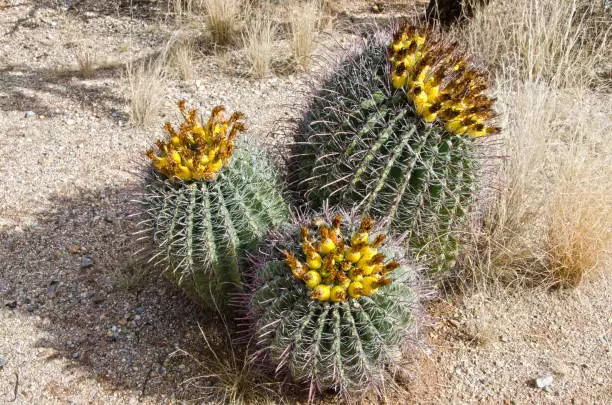Potting soil is an essential ingredient in the planting process as it provides plants with the needed nutrients. However, to get the best growing medium that will effectively support your plant’s nutrient needs, a lot of hard work and money is invested. Following the money and time spent, you will always think twice before tossing your old potting soil.
Despite the probable hitches associated with reusing potting soil, there are effective ways to recondition and make the soil fit for planting, if only you are willing to put in a little time, money, and energy. The recycling process is quite worthwhile in the long run as it cuts on costs associated with purchasing new potting mixtures every season.
Is it okay to use old potting soil?
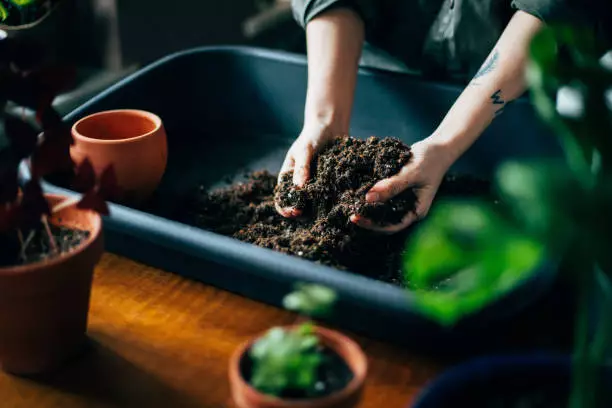
Using some recycling tips recommended in frugal gardening and careful handling is quite okay to reuse and revitalize your old potting soil.
Here is how you can rejuvenate your old potting soil:
Mixing the old potting soil with a fresh mix
Mix both in equal measures and add organic fertilizers to boost the availability of plant nutrients. This practice is only recommended for soil from previous healthy plants.
Heat-treating the old pot soil
Exposure of old potting soil to high temperatures from about 120°F to 212°F kills most of the disease pathogens sterilizing the soil. Below are two methods of sterilizing old potting soil:
- Using a black plastic bag, put the used potting and tie tightly, then place the bag in a translucent plastic storage container and place it outside on a sunny day.
- Put the used potting soil in a black plastic bag and place it in a parked car with rolled-up windows.
After heating the used potting soil and it has cooled, add it to the new potting mixture prepared.
While it is okay to reuse potting soil, DO NOT use it to start seeds instead of using a fresh mix of seed-starting potting soil.
What to do with old potting soil
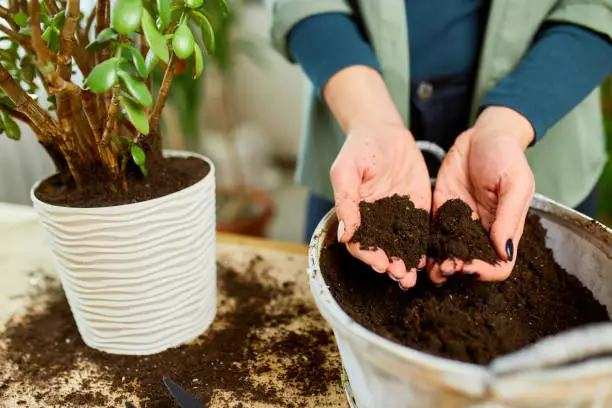
Old potting soil lacks nutrients and contains disease pathogens. However, that does not render the soil completely useless. Recycling old potting soil is a practice that will save you a lot of money. Reusing old potting soil requires a lot of attentive handling to avoid posing potential risks to healthy plants.
Here are some of the best recycling tips for old potting soil:
Preparation of moisture-holding top-dresser materials
old potting soil contains fewer weed seeds competing for space, humus, and pieces of perlites. This mixture makes the best moisture-holding topdressing material that improves the germination of the seeded plants, and the plants usually come up strong.
Lasagna gardening/sheet composting
this is a simple technique of making a new garden using layers of organic matter to prepare a planting bed on top of an existing one. Cover your cardboard using old potting soil and then top it up with several layers of aged manure, kitchen waste, leaves, and grass.
Filling up holes in the yard
using potting soil is the best filler for holes created by moles, critters, or even dogs.
Preparation of compost pits
used potting soil is used as an ingredient in compost pits to prepare a well decomposed and balanced compost and to develop a nutrient-rich product.
Planting perennials
old potting soil is used to put divisions of perennial plants, which will find a permanent home in a garden, they will not stay in the planting pot long enough to the extent of lacking nutrients.
Is old potting soil harmful to plants?
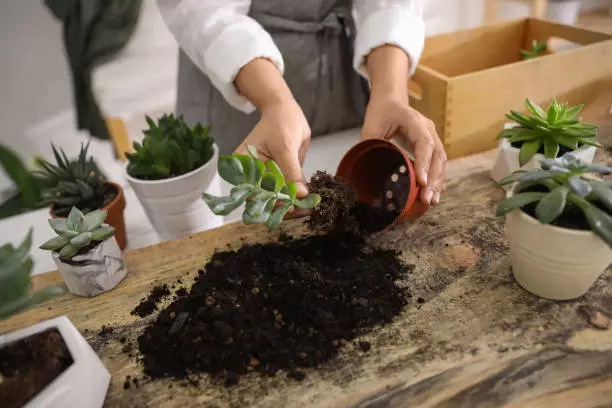
Old potting soils pose several risks to plants and, if not thoughtfully handled, can kill your plants. There are two renowned risks:
- Disease pathogens: Used potting soil contains pathogens such as fungi, viruses, bacteria, and other disease carrier organisms. These organisms affect the pot plant, eventually causing it to die.
- Minerals: plants acquire their nutrients from the soil. Used soil lacks the nutrients to support the growth of healthy plants efficiently. Minerals deficiency can also lead to diseases causing the plant to die.
How to reduce the risks
There is a solution to every problem, and so are the risks posed by reusing old potting soil. There are several simple strategies to apply while reusing old potting without posing any potential threats to your plant:
- Never reuse soil from diseased plants: Diseased plants may be dead and gone, but disease pathogens and other organisms remain in the soil ready to affect the next pot occupant.
- Sterilize old potting soil: pasteurize used potting soil by either baking it in the sun or placing it in a parked car with rolled-up windows. Sterilizing used soil kills disease pathogens, weed seeds, and any other harmful elements likely to affect the new plant.
- Use of organic fertilizers: To counter the leaching of nutrients due to exposure to weather elements, add organic fertilizers to boost nutrient availability in used potting soil.
- Mix the used soil with a fresh potting mixture: Mix the old soil potting soil with a new potting mix in equal measures to boost the soil’s fertility, improve moisture-retaining capacity and improve the growth of healthy plants.
- Never cross-mix different plants in the same soil: plants tend to change the structure of the nutrients in the soil to meet their needs. Therefore, a cross-mix of different plant species in the same old soil is bound to fail. For instance, reusing old soil from your beautiful indoor flowers to plant edibles like vegetables or herbs.
Do I need to replace potting soil every year?
Gardening experts recommend an annual replacement of potting soil. Replacement of potting soil washes away all the chemicals deposited by plants into the soil and any potential disease pathogen. However, the soil surrounding the roots need not be replaced annually unless the roots are diseased.
To replace the potting soil, empty the pots at the end of every season, wash your containers with a sterilizing agent and dry them thoroughly. Add your new mixture to the pot and replant the plant.
